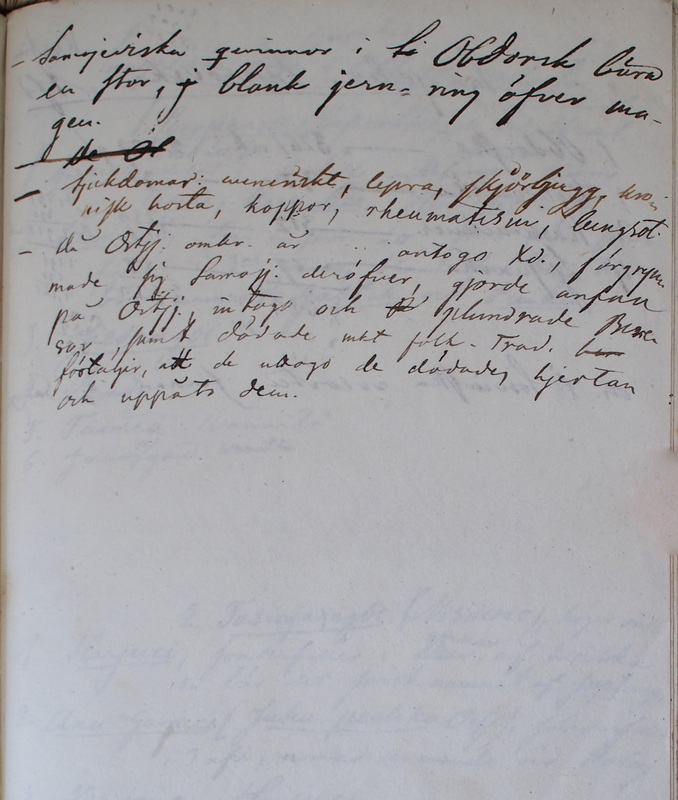Ethnographiska, historiska och statistiska anmärkningar. 258
Title
Ethnographiska, historiska och statistiska anmärkningar. 258
Description
| Samojediska qvinnor i Obdorsk bära en stor, blank jern=ring öfver magen.
TN ниʹ мара or ниʹ еся. Large copper or iron clasps used by women (also west of the Ural Mountains) as decoration and in order to tie the belt over their coats (Amelina 2014: 13, 23, 27).
|
The Samoyed women in Obdorsk wear a large, smooth iron ring over their stomach. |
| De Ob | |
| Sjukdomar: weneriskt, lepra, skjörbjugg, kro- nisk hosta, koppor, rheumatism, lungsot. |
Diseases: venereal, leprosy, scurvy, chronic cough, smallpox, rheumatism, pneumonia. |
|
Då Ostjj. omkr[ing].
år antogo Xd.[kristendom], förgrym-This can be related to the year 1781, when Prince Tajšin attacked the princedom of Ljapin together with the Nenets because the Ljapin prince accepted baptism. The eating of the heart(s) of the enemies by the winners of a war is a motif in Khanty folklore. (Bachrušin 1935: 67; Patkanov 2003: 91–92)
made sig Samojj.[Samojederne] deröfver, gjorde anfall på Ostjj.[]Ostjaker, intogo och plundrade Bere- sov, samt dödade mkt[mycket] folk. Trad[ition]. förtäljer, att de uttogo de dödandes hjertan och uppåts dem. |
When the Ostyaks adopted Christianity, the Samoyeds became furious, attacked the Ostyaks, captured and plundered Berezov, and killed a lot of people. Tradition tells us that they took out the hearts of the deceased and ate them. |
[[the page is upside down]]

